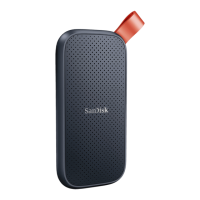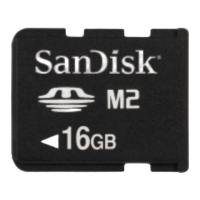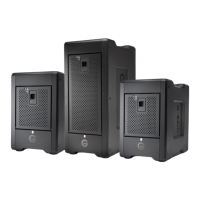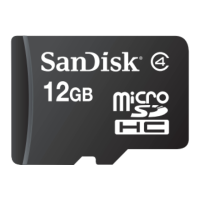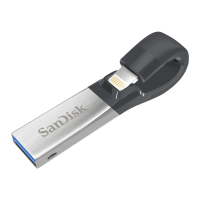Chapter 4 – SD Card Protocol Description
Revision 2.2 SanDisk SD Card Product Manual
© 2004 SanDisk Corporation 4-18 12/08/04
Table 4-7 Force Erase Function to Locked Card
CMD42 Parameter TWP
15
Card Status
Bit3 Bit2 Bit1 Bit0
PWP
14
GWP
16
Result of the Function
Bit25 Bit24
1 0 0 0 Yes Don’t care Error
17
1 1
1 0 0 0 No Yes Execute force erase & clear
Temporary Write Protect and
Group Write Protect
18
1 to 0 0
1 0 0 0 No No Execute force erase 1 to 0 0
• Relation between ACMD6 and Lock/Unlock State
ACMD6 is rejected when the card is locked and bus width can be changed only when the
card is unlocked. Figure 4-11 shows the relation between ACMD6 and Lock / Unlock state.
Table 4-8 Relationship between ACMD6 and Lock/Unlock State
Card State Bus Mode Result of the Function
Unlocked 1-bit ACMD6 is accepted
Locked 1-bit ACMD6 is rejected and remains in 1-bit mode
Unlocked 4-bit ACMD6 is accepted
Locked 4-bit ACMD6 is rejected and remains in 4-bit mode; CMD0 changes to 1-bit
mode
Note: After power on (in 1-bit mode), if the card is locked, the SD mode host shall issue
CMD42 in 1-bit mode. If the card is locked in 4-bit mode, the SD mode host shall issue
CMD42 in 4-bit mode.
• Commands Accepted for Locked Card
The locked card will accept commands listed below and return a response with setting
CARD_IS_LOCKED.
− Basic class (0)
− Lock card class (7)
− CMD16
− ACMD41
All other commands (including security commands) are treated as illegal commands.
Note: After power on, the host can recognize the card lock/unlock state by the
CARD_IS_LOCKED in the response of CMD7 or CMD13.
4.4.8 Application-specific Commands
The SanDisk SD Card is defined to be protocol-forward-compatible to the MultiMediaCard
Standard.
The SD Card system is designed to provide a standard interface for a variety application
types. In order to keep future compatibility to the MultiMediaCard standard together with
14
Write Protection PWP: Permanent Write Protect (CSD bit13).
15
Write Protection TWP: Temporary Write Protect (CSD bit12).
16
Write Protection GWP: Group Write Protect (CMD28, CMD29, CMD30).
17
Refer to Note 2 in Table 4-6.
18
Refer to Note 3 in Table 4-6.
